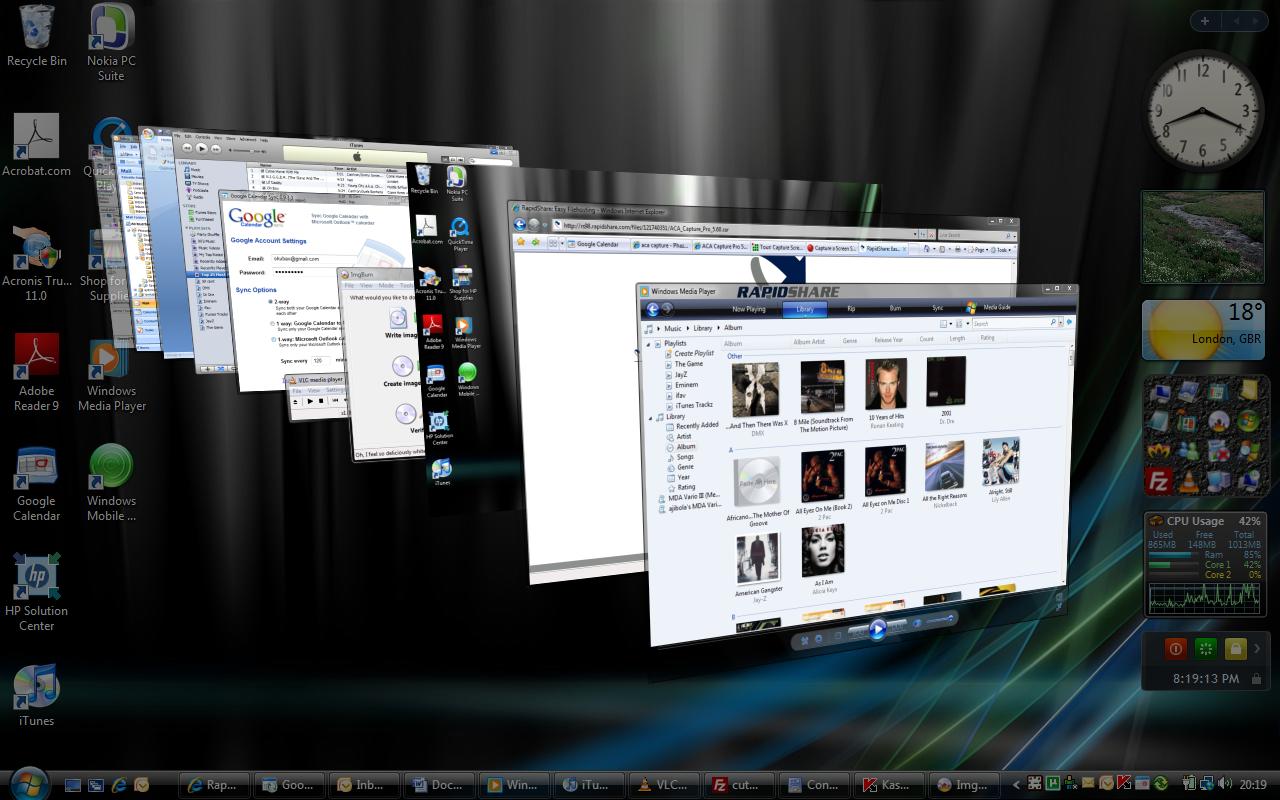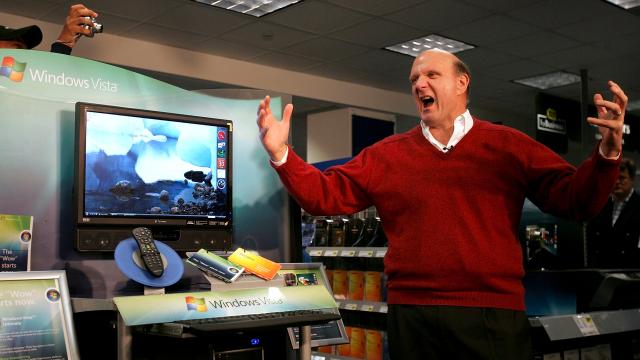Image via Getty.
This week, Microsoft ended support of Windows Vista, ten years after it arrived on our computers in frosted-glass splendor. Was it bloated? Perhaps. The demands of the interface were unforgiving on old hardware. But it felt like a glimpse of the future.
In development, the codename for Vista was Longhorn. Longhorns are cattle, of course, with their namesake horns spanning up to six feet, unwieldy flourishes that don’t exactly encourage nimble movement. They’re said to be descended from the first cows brought to America by Spanish colonists — literally the cows of Christopher Columbus. Vista too came from an established lineage, preceded by Windows XP, which was of course a ubiquitous and chunky improvement over the Windows 95 line.
XP’s interface looked like LEGOs and Play-doh. The task bar was a car bumper. You could feel the weight of every colourful button and rounded corner as though they were simulacra of chunks of plastic. Vista was not that. Vista was glass and mist, rays of light in the fog. Everything was translucent and you could make the windows fly around in 3D space like shuffling a weightless deck of cards. The brutalism of previous versions had crumbled and left panes of glass floating above the dust.

Image by Ajibola Okubanjo via Flickr.
But it didn’t quite work.
At launch, Windows Vista required a high-end system to run well. The ambition of the interface was hindered by the reality of installing a new OS on old hardware. That is always an issue with a new release, but the demands of Vista made it particularly slow for casual users not running tricked out machines. It was too much of everything, complete with tacky widgets festooned across the desktop — clocks, post-it notes, news tickers, and more if you wanted. Running Vista felt like driving a heavy truck. You needed to brake in advance and be patient with the momentum.
As the years went by, though, updates to the operating system and the ever-increasing speed of computers made it all work as intended. By the end of its lifecycle, it was… fine. Vista ran fine on faster machines. By then, though, the chrome and glass and the touches of skeuomorphism were beginning to look dated. And in 2009 Windows 7 arrived with all the glass but none of the weight. Windows was fresh and light and simple once again.
Windows Vista may be remembered as a bloated operating system with the wrong priorities, but was a fascinating push forward towards the sci-fi interfaces we’d been dreaming of. Hasta la Vista, Windows.

Comments